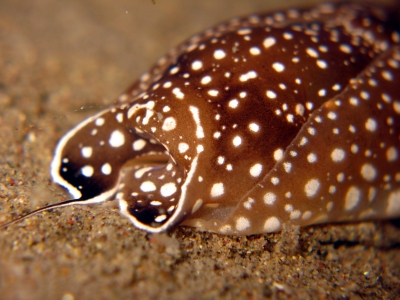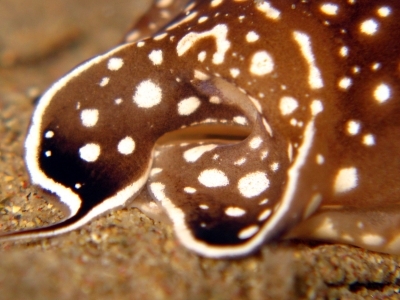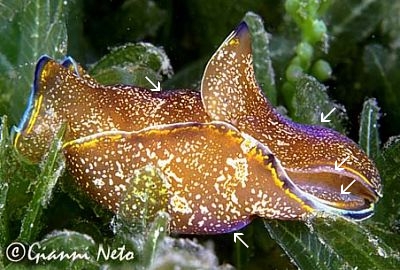Re: Aglaja tricolorata from the French mediterranean
July 7, 2008
From: Dominique Horst


Concerning message #21672:
Hello Bill,
Many thanks for your quick answer.
I will now consider the physical colour. I was miles away from thinking about this...
As proposed, the close-up shots about the posterior flagellum.
Locality: Cagnes, 8m, France, Mediterranean sea, 01 July 2008, muddy. Length: 40mm. Photographer: Dominique Horst.
Kind regards,
Dom.
dominique.horst@wanadoo.fr
Horst, D., 2008 (Jul 7) Re: Aglaja tricolorata from the French mediterranean. [Message in] Sea Slug Forum. Australian Museum, Sydney. Available from http://www.seaslugforum.net/find/21676
Dear Dom,
Thanks for the close-up photos of the flagellum. It's good to be able to compare it with similar structures in the closely related, if not identical genus Navanax.
Concerning the structural colours. You need to see living aniamls, not photos, to distinguish these structural colours because they are only seen, a bit like a rainbow, when you change the angle of your eye, or your light, to the animal's body. This 'false' blue is seen in other aglajids as well, and by chance we have a good photo of it in Gianni Neto's photo [message #5793] of that other mediterranean aglajid, Philinopis depicta. I have copied his photo alongside and have added arrows pointing to the blue bands which are caused by the interaction of light with the beating of the cilia covering the skin. The blue at the posterior tip of the head shield and the posterior edge of the body are pigment.
Best wishes,
Bill Rudman
Related messages
-
Re: Aglaja tricolorata 'colour variation'
From: Dominique Horst, August 17, 2009 -
Re: Aglaja tricolorata 'feeding'
From: Dominique Horst, September 5, 2008 -
A damaged Aglaja tricolorata
From: Dominique Horst, September 4, 2008 -
Aglaja tricolorata 'trailing'
From: Dominique Horst, July 17, 2008 -
Aglaja tricolorata from the French mediterranean
From: Dominique Horst, July 4, 2008 -
Aglaja tricolorata from Malta
From: Patricia Peels, February 1, 2007
